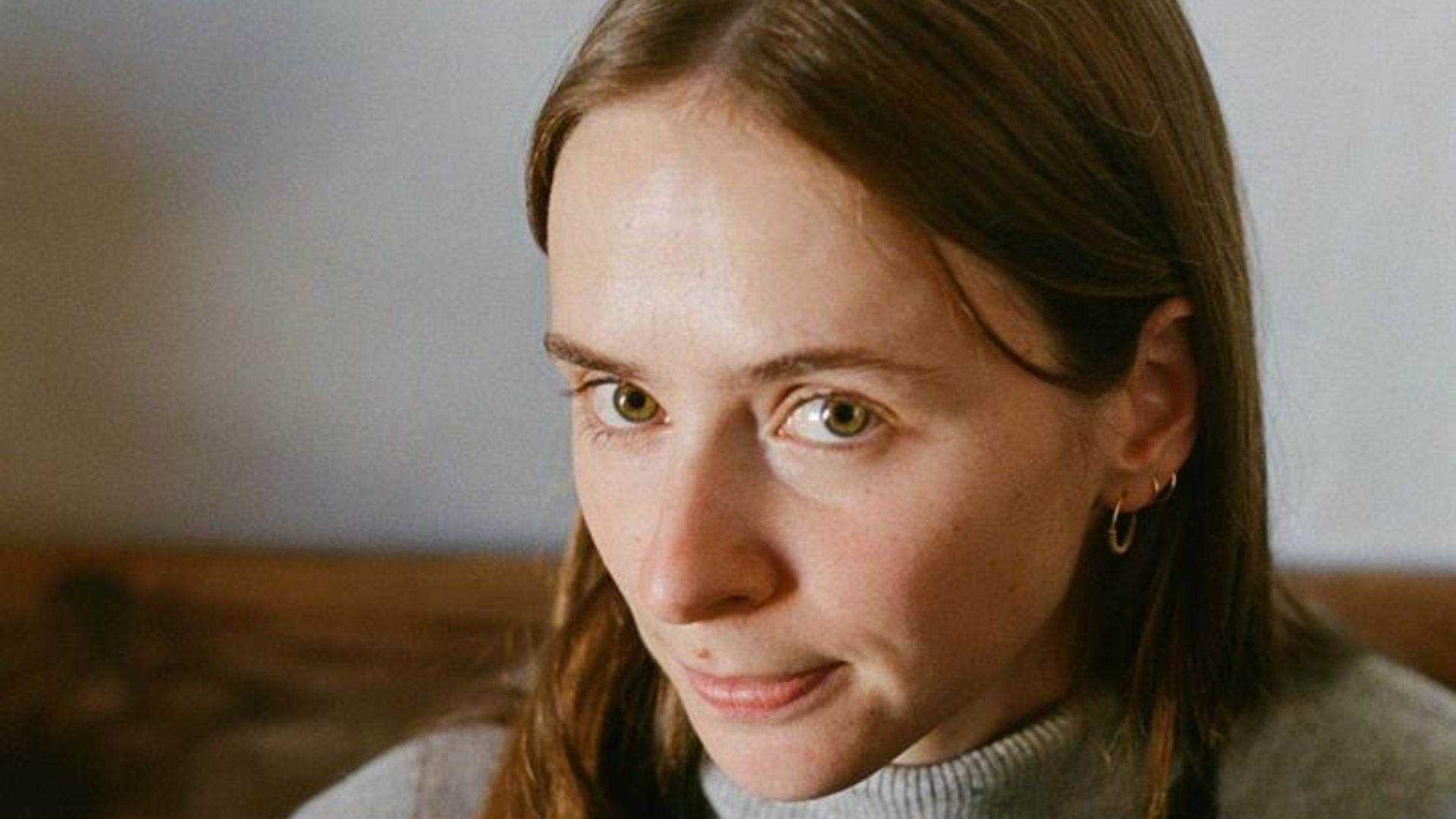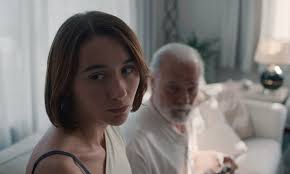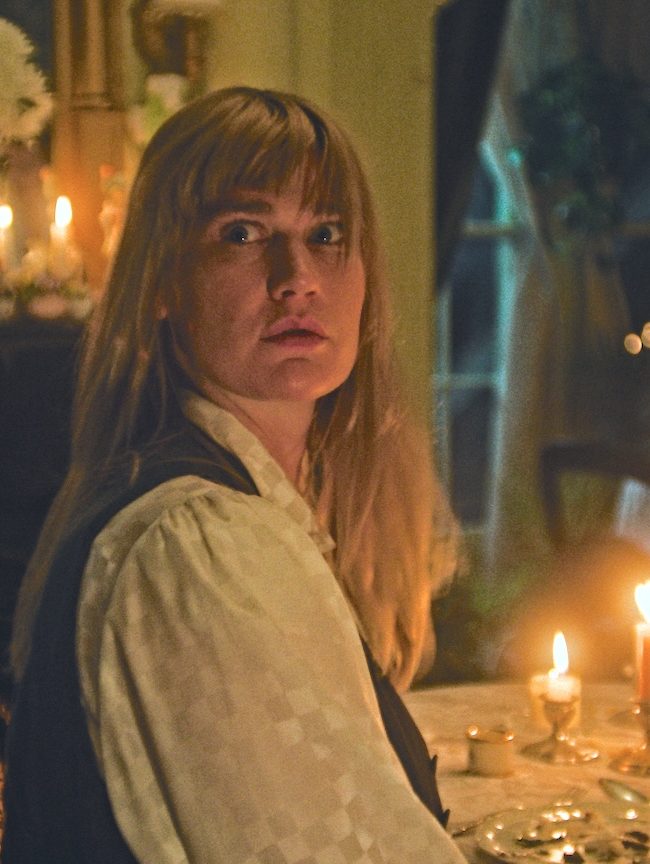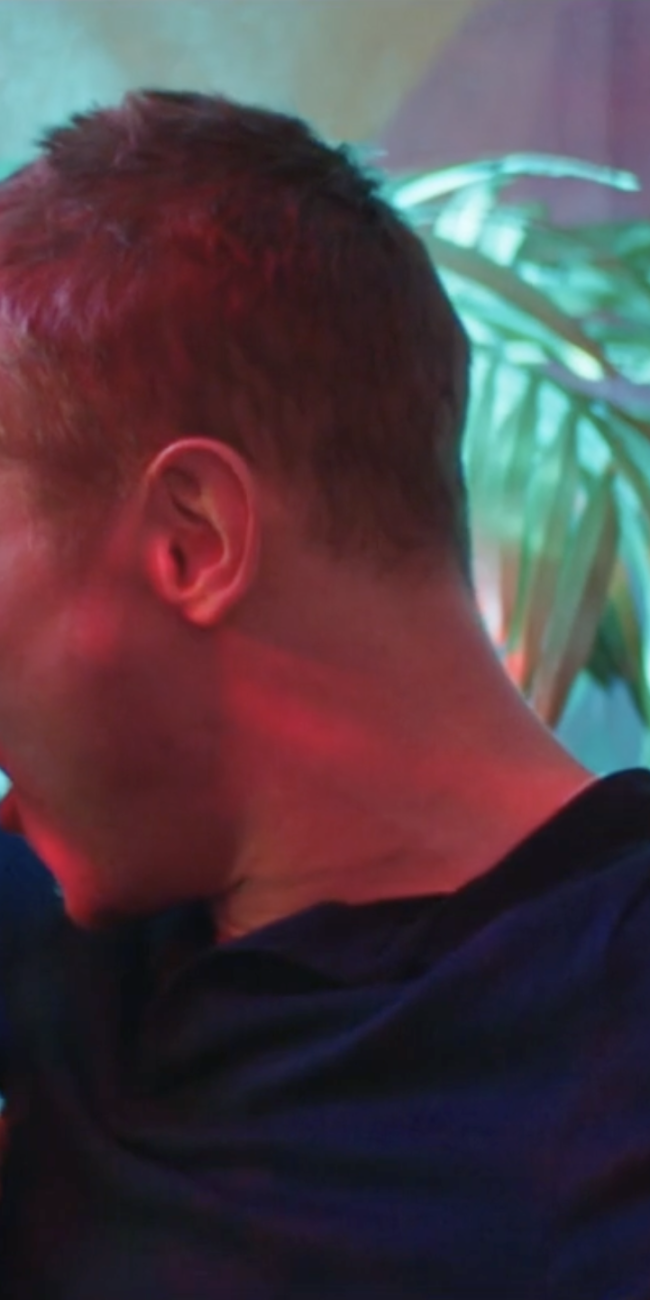A Conversation with Lucía Aleñar Iglesias (FORASTERA)

Despite having its world premiere on the heels of summer, Forastera – Lucía Aleñar Iglesias’ debut feature film – takes place over a long, winding summer full of beach days, sunbathing, and a sudden tragedy. As we grieve the end of another summer, Iglesias looks at the experience of truly grieving for the first time in someone’s life, and the subtle, tangible changes that emerge from the process.
Based on Iglesias’ short film of the same title, Forastera follows a family as they mourn the shocking loss of their matriarch (Marta Angelat), focusing on teenage Cata (Zoe Stein), as she begins to reflect on the past life of her grandmother, picking up the pieces of the past and bringing them back into her family’s life – to their confusion, adoration, and dismay. Set on the Island of Mallorca, in a sometimes lazy, sometimes lively summer town rife with vacationers, Forastera twists the dreamy, time-bending feeling of summer vacation into a haunting ghost story.
The short film premiered at Cannes in 2020 and the feature premiered on September 8, 2025 at Toronto International Film Festival, winning TIFF’s FIPRESCI Prize celebrating to emerging filmmakers. We spoke with Iglesias about the progression of the feature from the short in a conversation edited for length and clarity.
Hammer to Nail: This film has been a long time coming for you, with the original short film coming out in 2020. I’d first like to know about how that film came about, then what spurred the feature and the changes between these films.
Lucía Aleñar Iglesias: Yeah, well, I think the inspiration for both came from this sort of strange feeling I had that I was very curious about – and in fact, as I developed both and sort of pitched the story, I realized how many other people shared this sort of similar experience or feeling – which is when someone projects the deceased onto you. I became very interested in the ways in which we project our deceased onto places, things, objects, and especially people. How is it that we can look at someone and see two people, or just see someone else, right? Whether conscious of it or not, grief can really open us up to these eerie ways of keeping our loved ones around for longer.
So it started out as a short film where we were sort of navigating this idea and trying to present it, but there’s really only so much you can do on a short film, right? While I love what short films can offer, I knew I wanted to keep digging in this story, but I didn’t want to make the same thing. So I worked on the premise of this young girl who is being projected on and is having these sensations of presence right after a big loss. And she decides to play with it, but what does that do to her, how does that transformation affect her? And, more importantly, how does it affect her family, the household that is also grieving and having their own process? I wanted the character to be different, in that I think she’s a lot more empowered in the feature version. She’s curious and jumps head-in to this journey. And the grandfather also takes on a much more active role where, in the short , it’s kind of ambiguous whether or not he is completely aware of what’s going on. I also broadened the story, bringing more characters into this family, like the mother character, coming in and disrupting this world.
HtN: How did this decision to make Cata more of an “empowered” character, as you say, manifest into a ghost story?
L.A.I.: I was interested in introducing this ghostly element in a very casual way in the film. In fact, what I was really interested in is whether you might see the ghost or you might not. For me, the whole point is that if you’re looking for it or wanting to see it, you will. For me, the ghost in Cata’s world is like a necessary creation for her to process this grief, and is more of a tool for her emotional landscape. She needs to see these ghosts, or have this presence and this transformation, in order to process her grief.

A still from FORASTERA
HtN: Could you talk a bit about writing and directing the character of Cata, specifically how she begins to intertwine herself with the memory of her grandmother. How did you choose which qualities should carry over and how this process should happen?
L.A.I.: There’s always a subtlety in mind there, because I was really interested in the ways in which Cata creates or assimilates into her grandmother, but is also very much just a version of her grandmother because, you know, she’s not an old woman. So Cata is taking little elements or gestures – the way in which her grandmother acts around her husband or her other granddaughter – and kind of creates a collage of these ideas and objects from around the house. One of the big things we talked about with Zoe was how much this character lives in her head, and how much fantasy plays a role in her life. We worked in rehearsals, both of them together, to kind of design what sort of gestures they could share.
HtN: One of the main material or physical characteristics Cata takes from her grandmother is a dress she finds in her closet. There is absolutely an element of recreation and nostalgia that comes with clothing, especially with the common experience of kids playing dress up with their parents or grandparents’ clothes, but why did you choose to center this item of clothing so prominently in the film?
L.A.I.: Dressing up is such a sensorial, playful thing that I feel like we’ve all done. We’ve all unlocked this part of our imagination, or this part of ourselves, where we can become someone else. So there was something there that I think was very rich for a character like Cata to access. Even though she never saw her grandmother in that dress, it just unlocks a lot of nostalgia, I think, and a lot of “what ifs”: what must this person have been like when she was wearing this?
In the feature, it’s actually not a dress, it’s a romper, versus the dress in the short film. It’s a very subtle difference that maybe you don’t quite see, but it was a big decision there in changing who her grandmother was, like she wasn’t just wearing dresses, she was wearing rompers and that has its own implications.
HtN: That’s really fascinating; many of the characters don’t give too much of their background, so when writing these characters did you develop a backstory for your own understanding, or did you keep yourself as in the dark as the audience is?
L.A.I.: I was interested in that sort of tension of how little she knows about this woman, and how little attention she might have paid to this person in her life and that maybe there is a lot that she didn’t know. And the fact that she didn’t know is why she has so much curiosity toward this woman, and wanting to connect with her. I feel like at that age, particularly, we’re not especially interested in our elders, and it’s really too bad.
HtN: Visually, the film translates this idea of Cata’s “transformation” into her grandmother through the use of shadows and mirrors, but going back to the beginning of our conversation, when you mentioned looking at someone and seeing multiple people, I actually thought of Cata’s relationship with her sister in the film, Eva. They are sometimes confused for each other, and this confusion between them becomes even more complicated after their grandmother’s passing, since Eva seemed to actually be closer with her than Cata, despite Cata taking on their grandmother’s role. Could you elaborate on how you crafted this tension in their relationship?
L.A.I.: I wanted to create that tension where, like you say, Cata feels this sort of goal to to transform. But in fact, it was her younger sister who had the closeness there. I was also really interested in how both of their processes of grief would clash, especially with the younger sister sort of being shielded from a lot of this information. I think it’s quite common to treat kids, when going through a process of grief, by not explaining too much, and that can cause a lot of confusion. From the very beginning, Cata and Eva have a very close relationship, though Cata is sort of testing the limits of Eva’s patience, and this intensifies when she brings the persona of her grandmother into their relationship. So there’s this tension until they both accept that they’re going through something that they can’t quite put words to.

Zoe Stein in FORASTERA
HtN: Something special about this film is how elusive its timeline is. It takes place throughout a summer, but we the viewer are not exactly sure when the summer starts or ends, when this tragic event happens, or how much time has passed between that moment and other events of the film. These loose barriers of time mimic this lost, listless feeling of grief. Can you talk a bit about how you balanced keeping this timeline grounded while translating this palpable feeling?
L.A.I.: That’s exactly what we were going for, trying to make it feel like time stops or there’s this weird stretching of time. I was very intuitive about it when writing and on set just feeling out how to time those moments. But I think you kind of feel it in the way we sort of chose to shoot and in the way we designed the house. The house is stylized in that it feels slightly stuck in time: a grandparents house with these little knickknacks and a very carefully designed color palette. There’s something eerie there, right?
But then with the cinematography too, we were interested in creating this sort of postcard-like, idyllic sensation that was also coupled with that eerie hauntedness. In doing very long takes and carefully composed shots, that allows the viewer to wander in the scene and to rest their eyes on a detail or then look at something else. And I think that helped to create that sensation of, we don’t know how much time is passing, right? Something else was also in designing the house. I was interested in not quite revealing the architecture, and it feeling a little bit disorienting. You know, we’re in this place, and we feel like we’re in this house, but we don’t quite know where the bedrooms are and where they are in relation to the kitchen. So there’s this idea of it feeling a little bit disorienting, even though it is familiar.
HtN: Forastera translates to “outsider” or “foreigner.” How does this relate to the theme of grief present in the film?
L.A.I.: The title Forastera actually comes from the island of Mallorca. The locals there use the term to refer to the Spaniards that come from the peninsula and either visit or end up living there. So it started in a very literal sense: Cata is a forastera coming to visit this island. We wanted to sort of build this version of Mallorca – the Mallorca of a forastera – through carefully designing, for example, the presence of the ocean being constant and the way she weaves between the very touristy area and then inserts herself into the local, traditional parties and customs, but without paying that much attention – she’s just kind of traveling through them. So in that sense, forastera comes from there, but also in an emotional sense. For Cata, she is suddenly in this process of grief and it kind of takes her outside of herself. In that way, she is sort of very foreign to this journey and to sort of discovering who she is going to be once she’s sort of lived this.
HtN: I also found a deep questioning of belonging in the film, and this also relates to the state of being a forastera. To apply this to your own life, however, you lived in the US for almost 10 years and this story brought you back to your home. How did your own experience of belonging influence this film?
L.A.I.: If I didn’t live so far away, I don’t think I would have written this story. That is very much tied to why I was interested in exploring these ideas of belonging: where do you belong, and how do you relate to your home now that you’re gone and coming back to that place. Cata returns to this home, this summer house every year, so has a weird sense of belonging with it, right, because it is her home, but it also isn’t, because she has a very casual relationship to it. And the mother has her own journey coming back to this house and feeling like it is her home, but she doesn’t quite belong in it, or doesn’t quite know how she fits in it. And then in the familial context, when you lose someone, how do you reconstruct the family, and how do you find that sort of sense of whole? So I think these all connect to the idea of belonging and rebuilding.
– Kaitlyn Hardy











